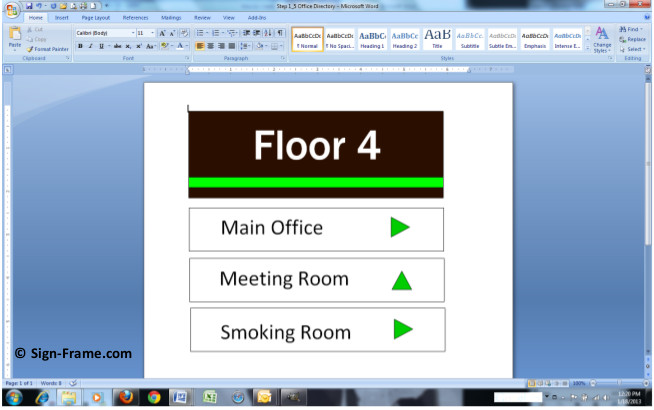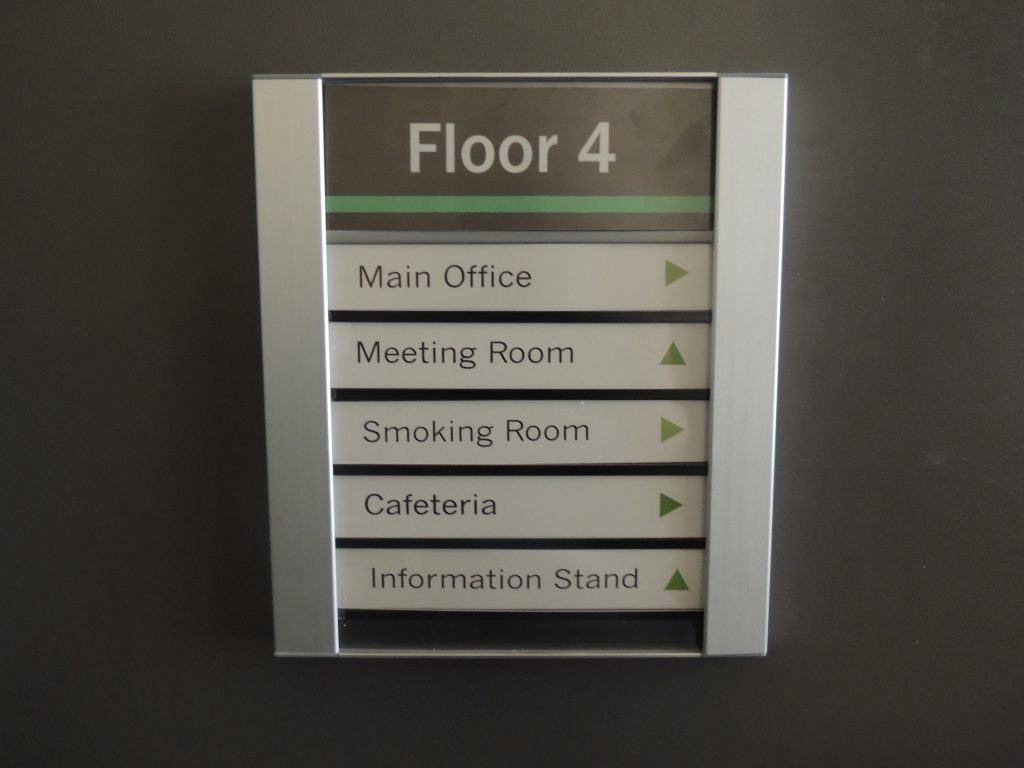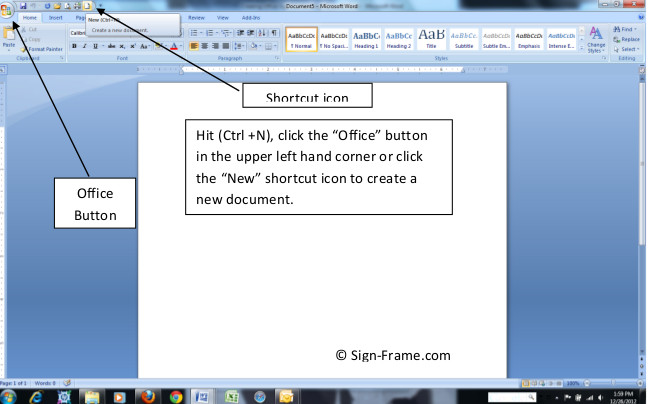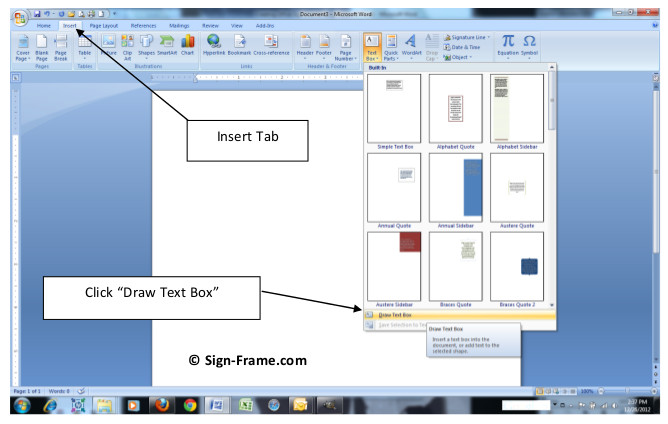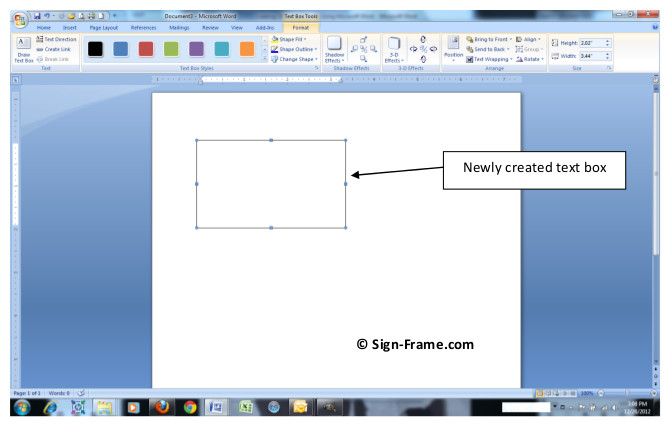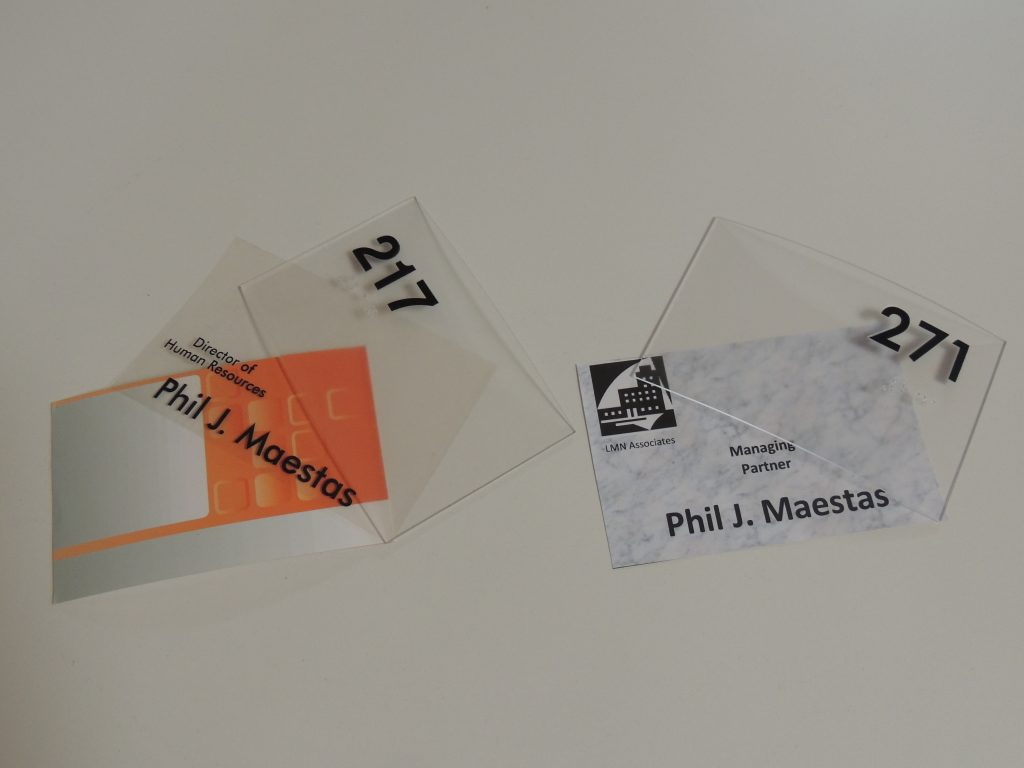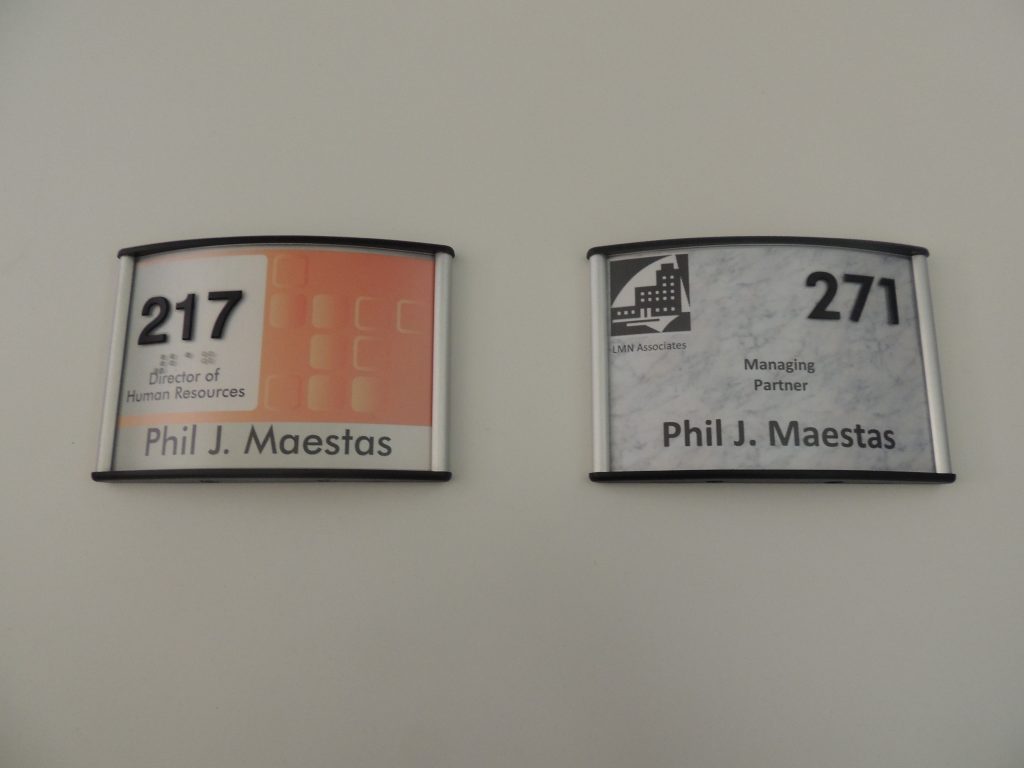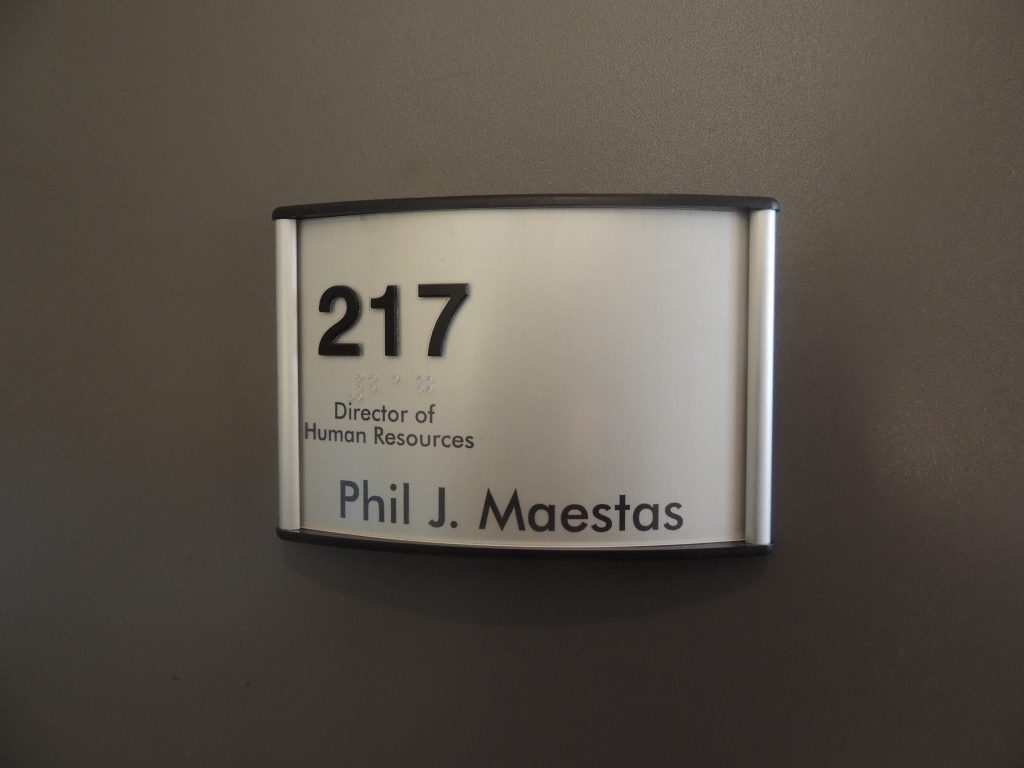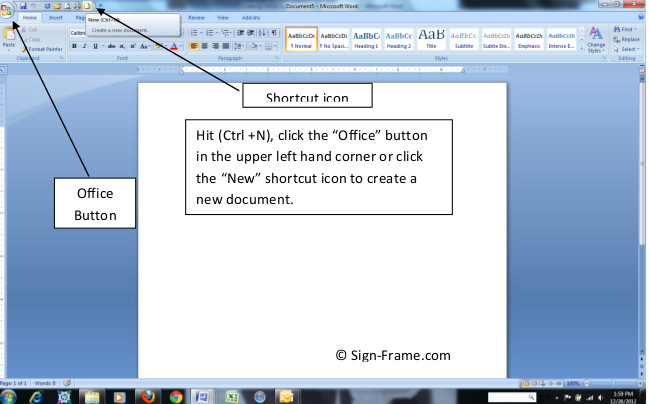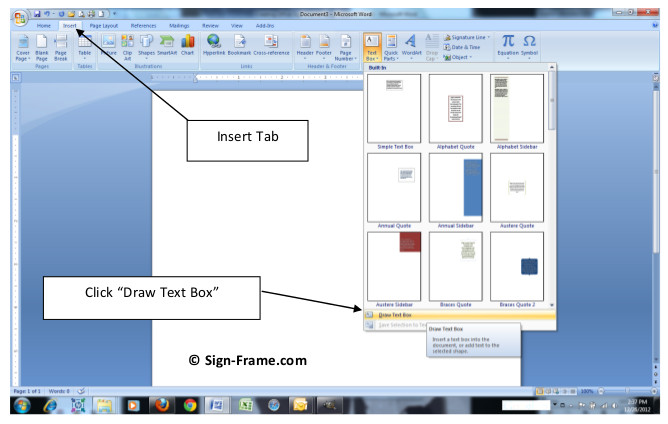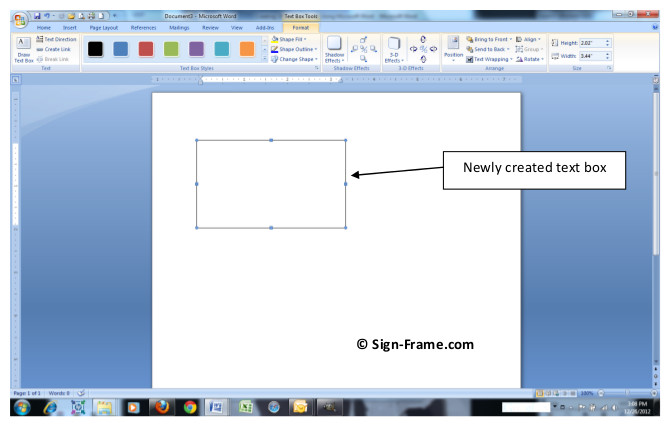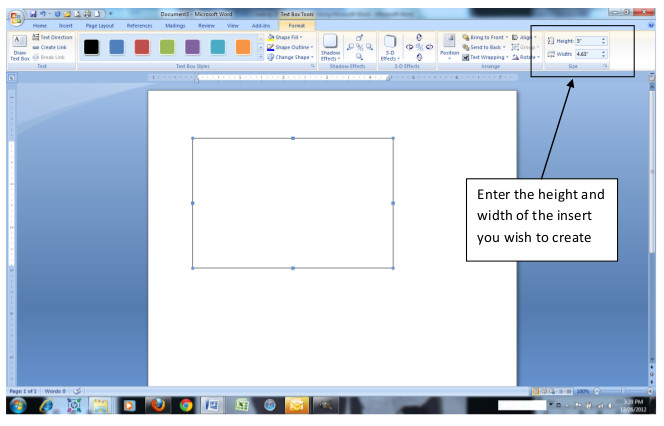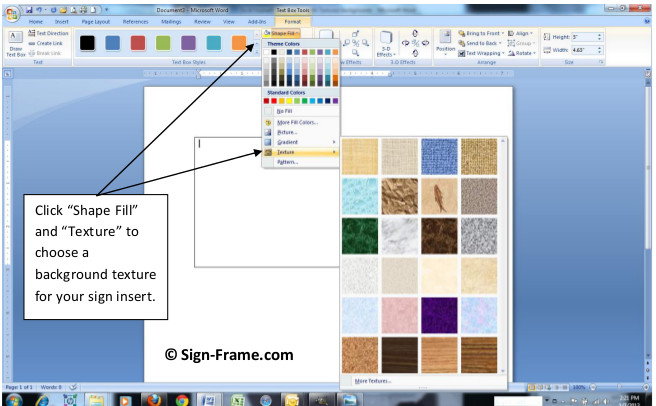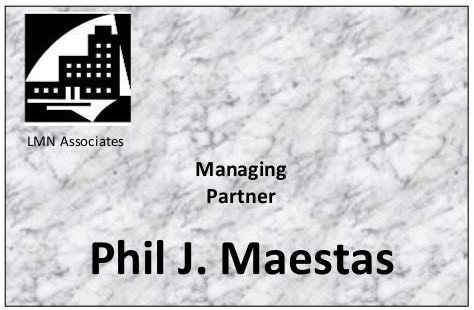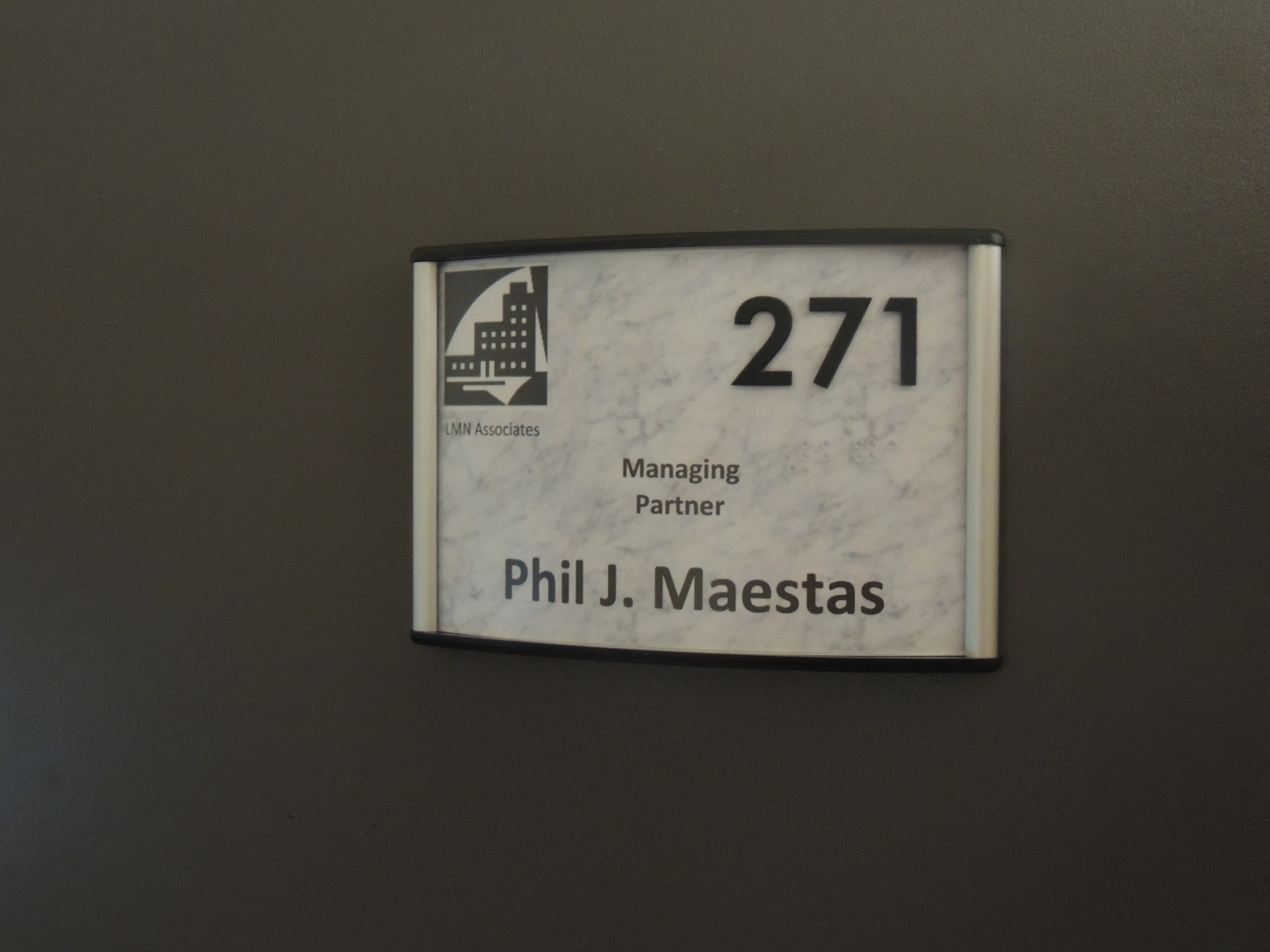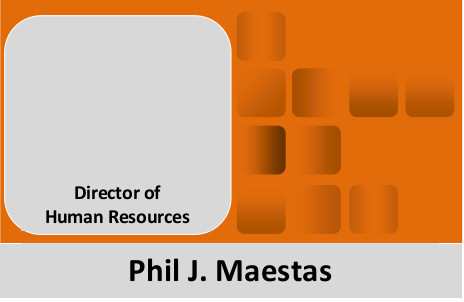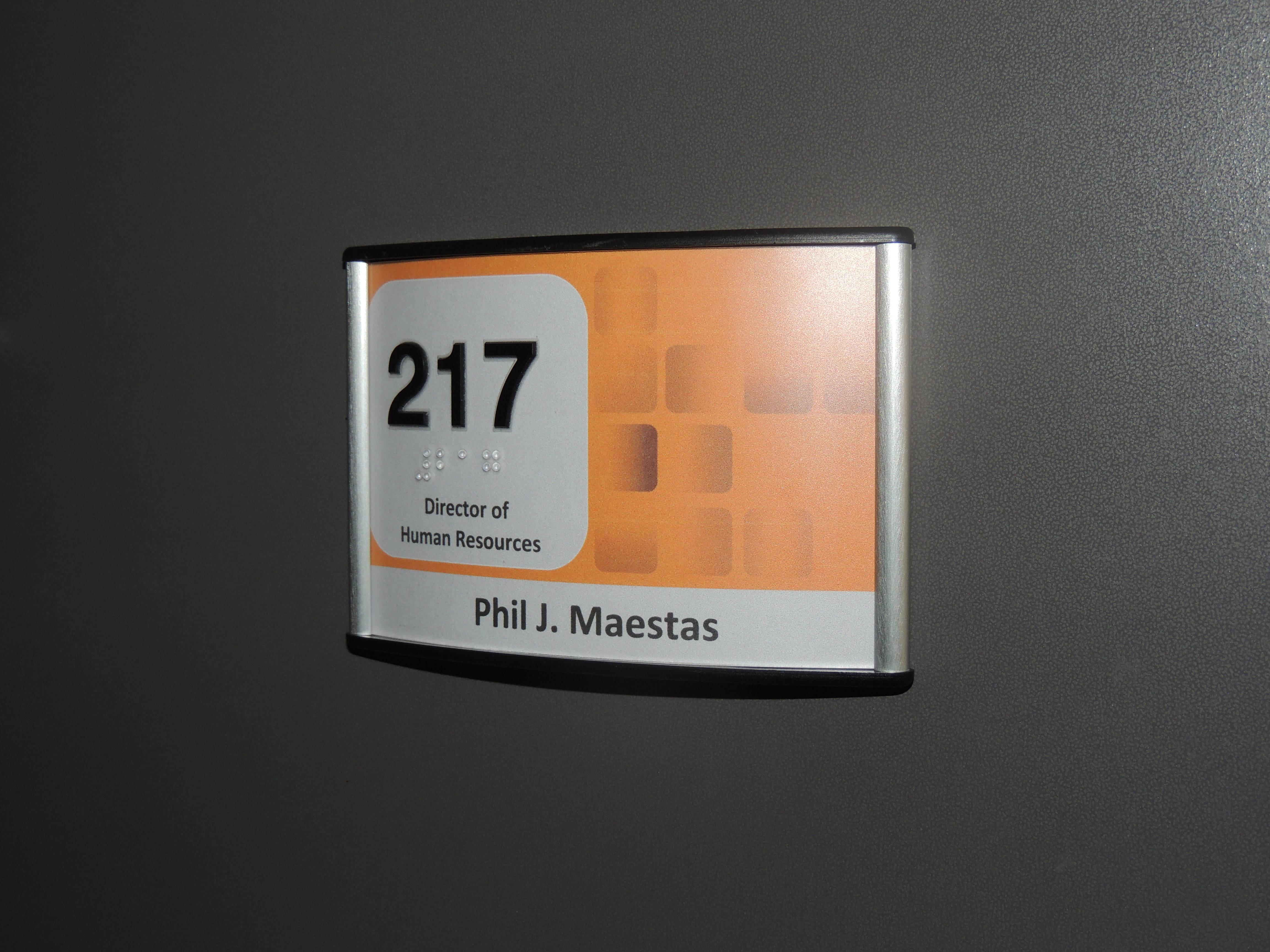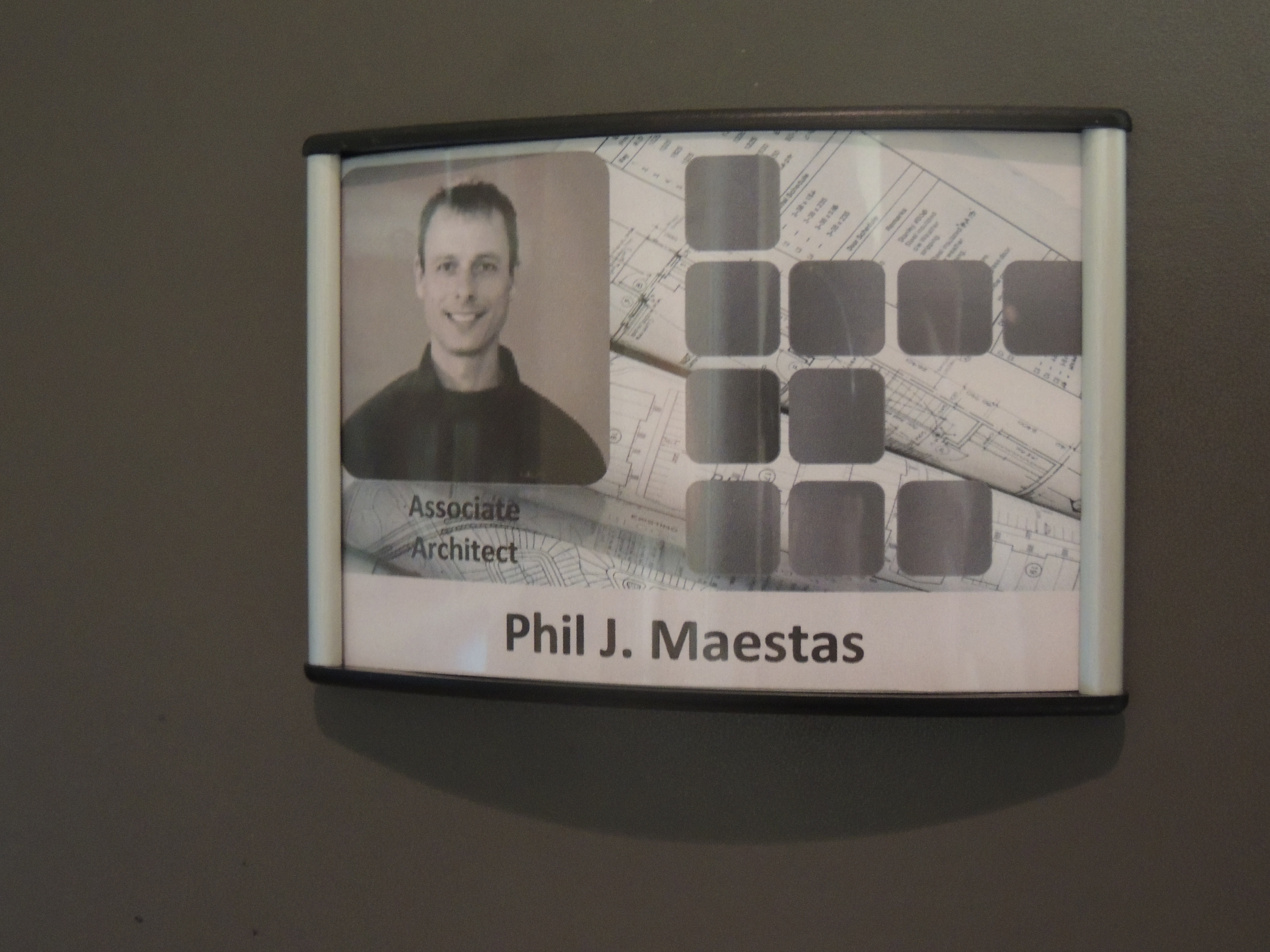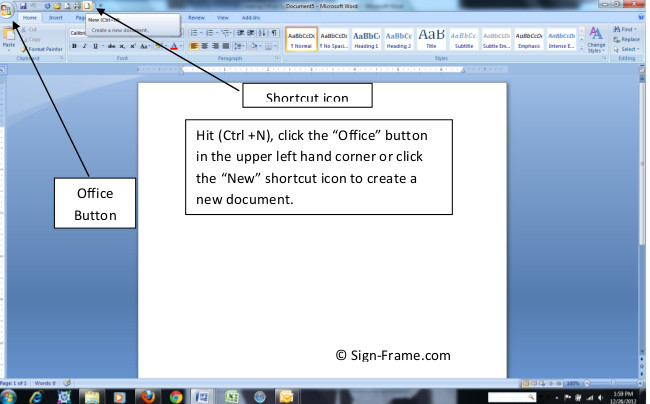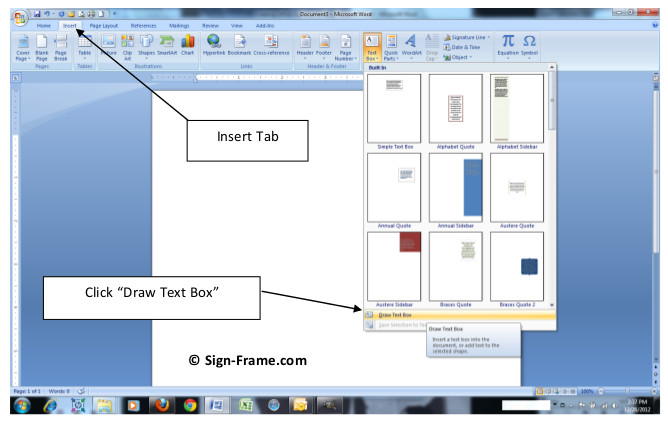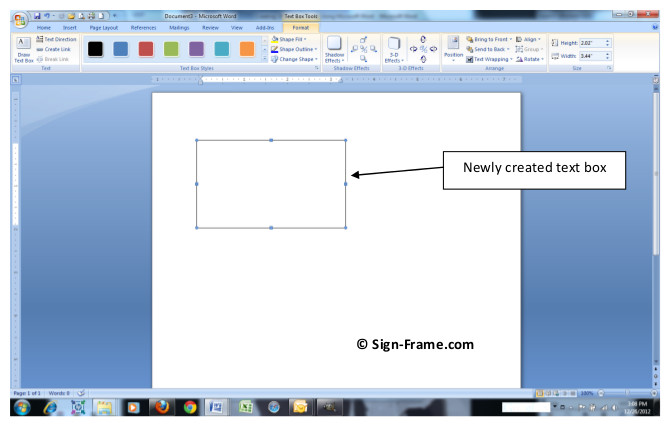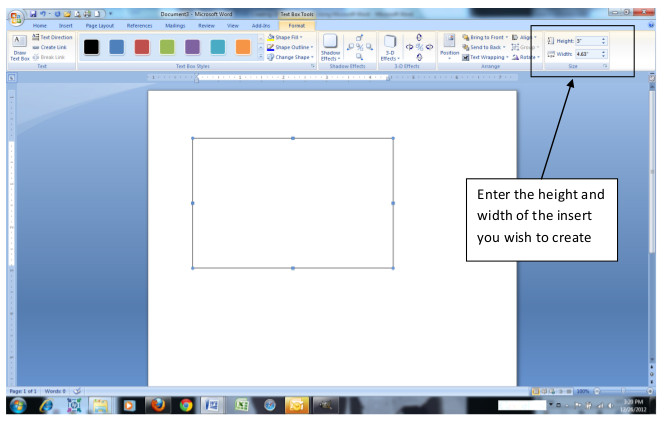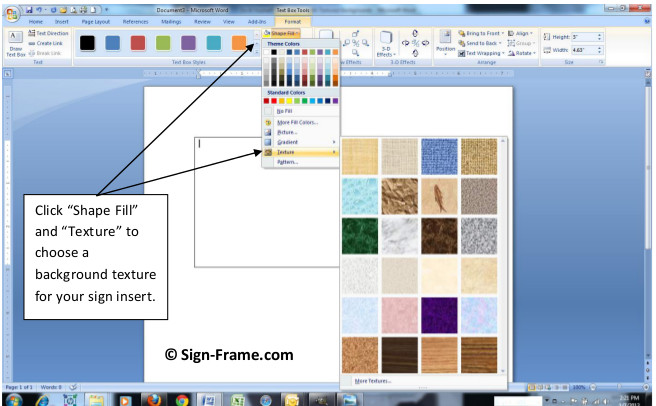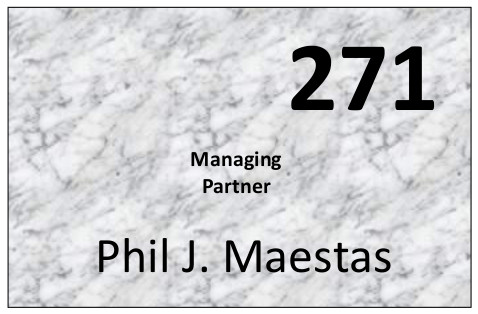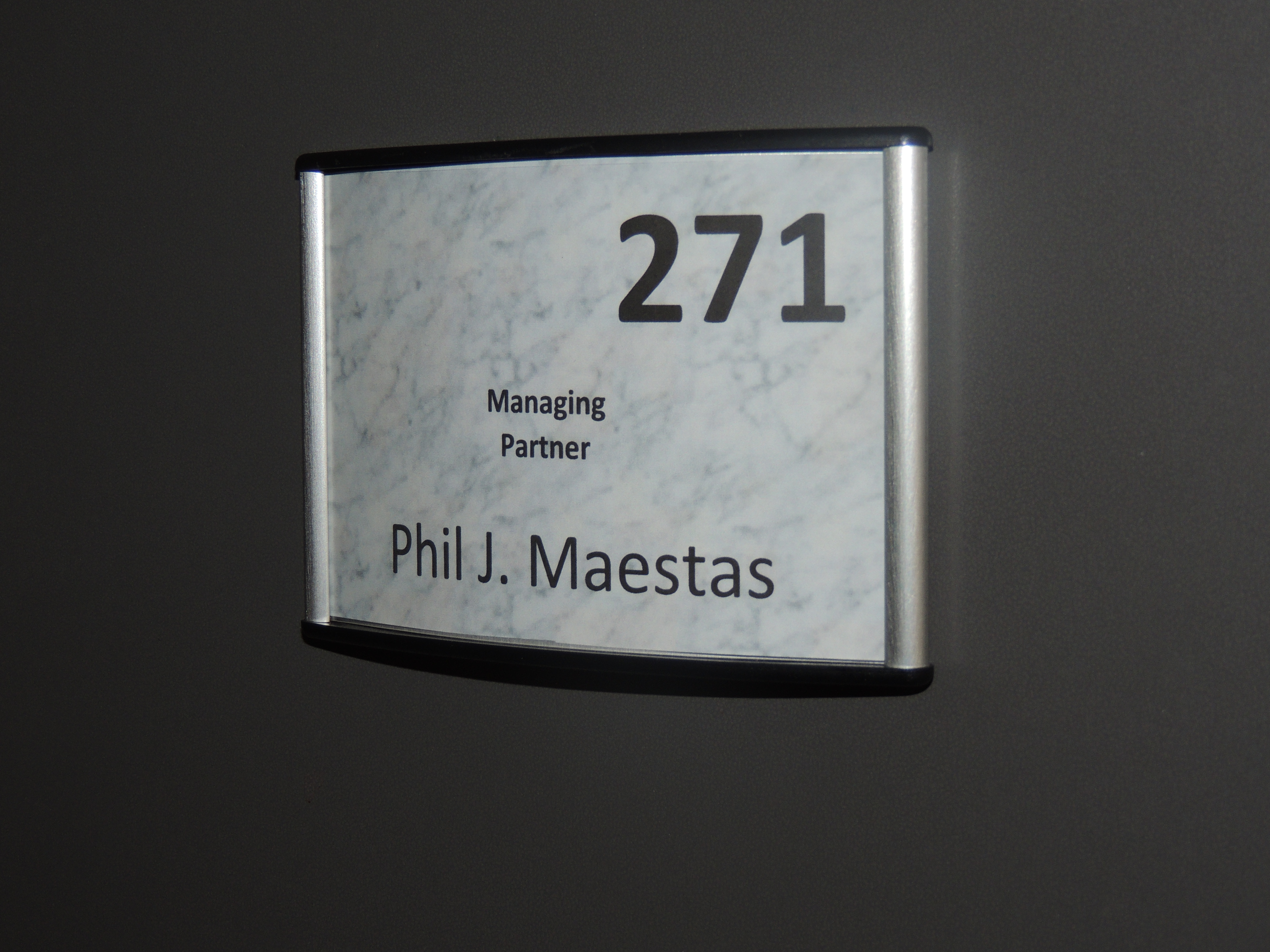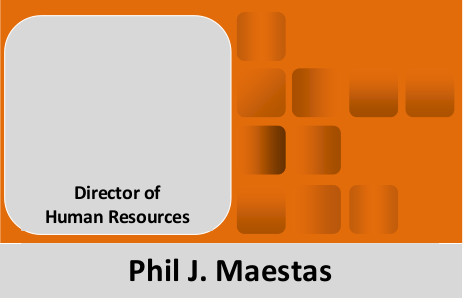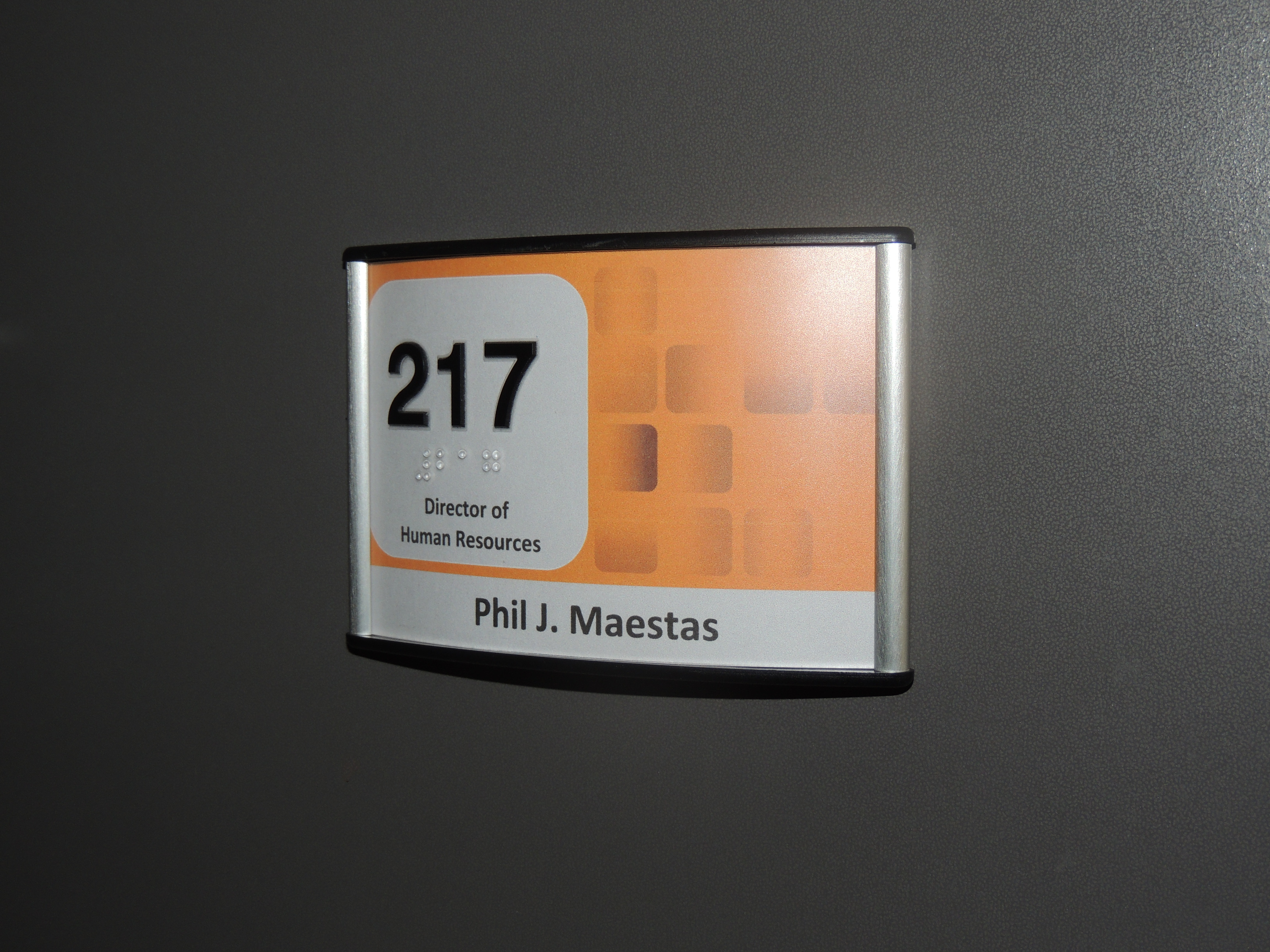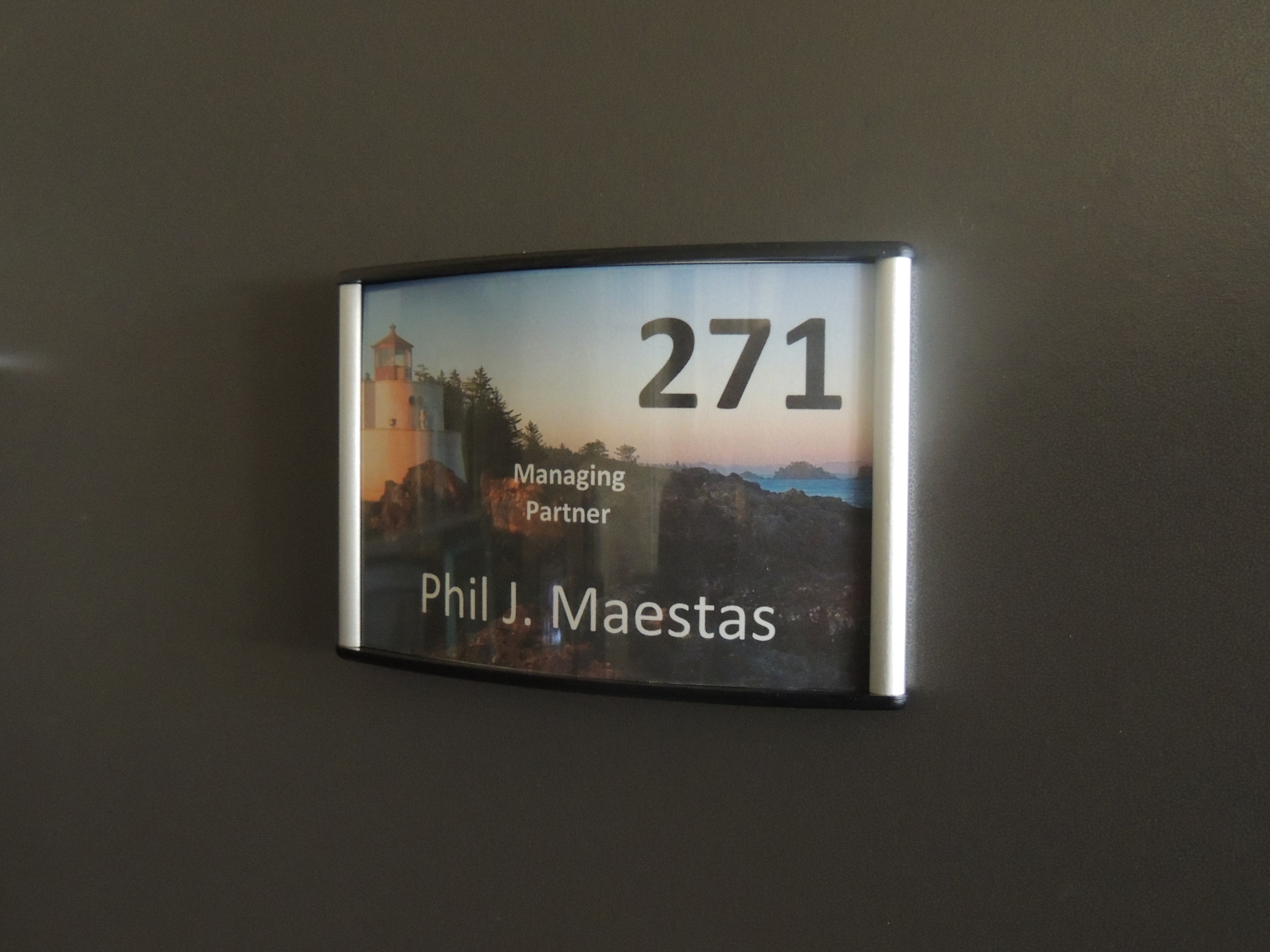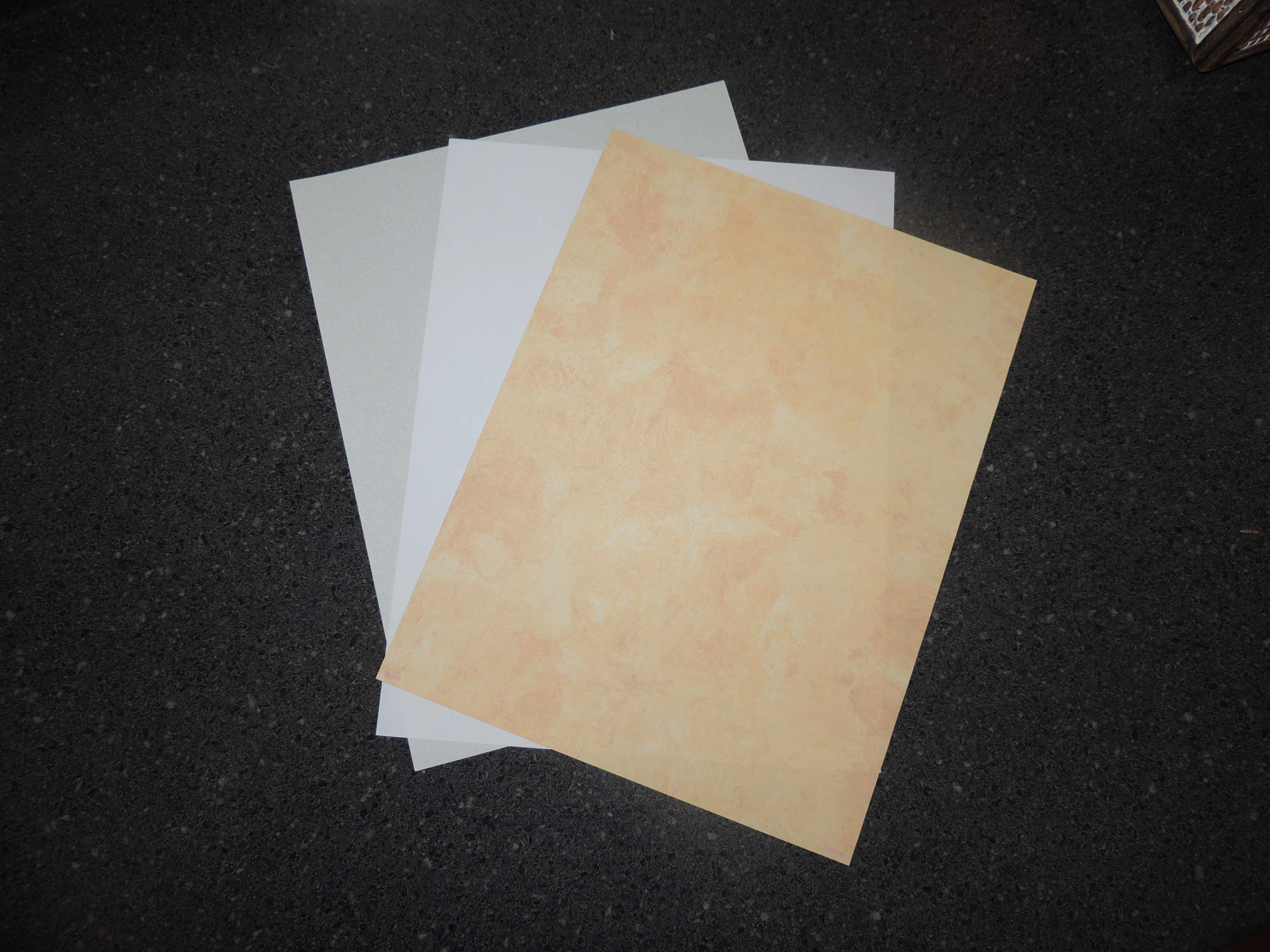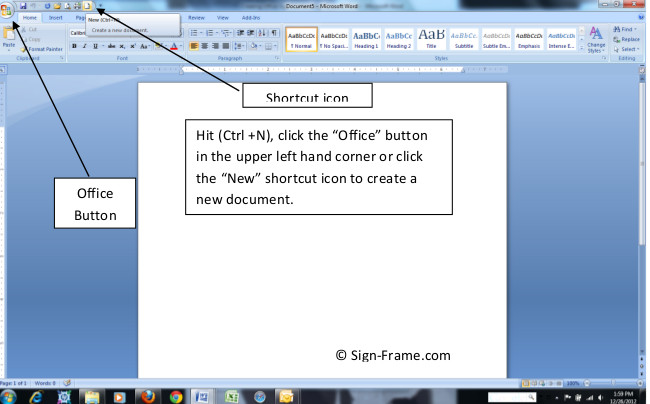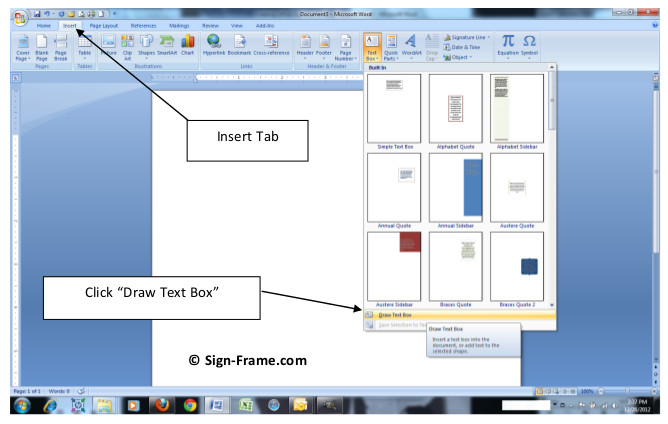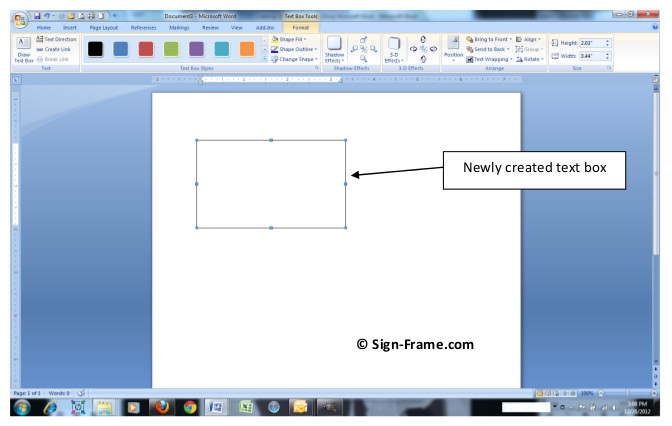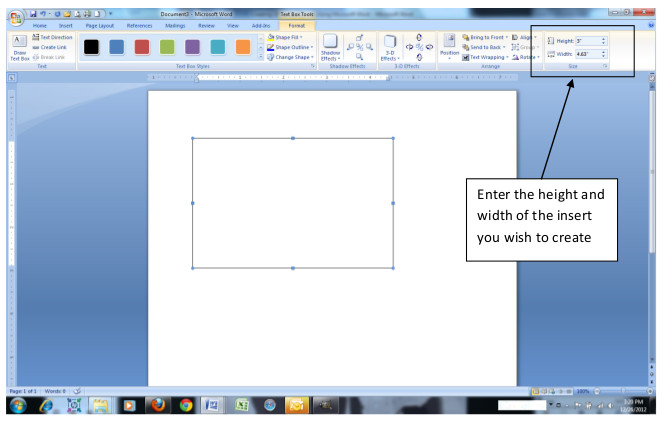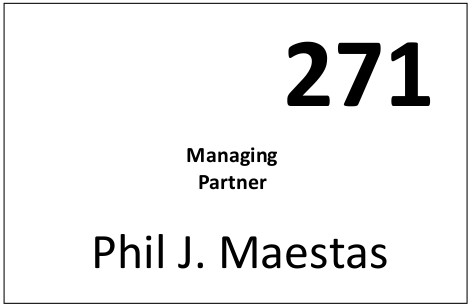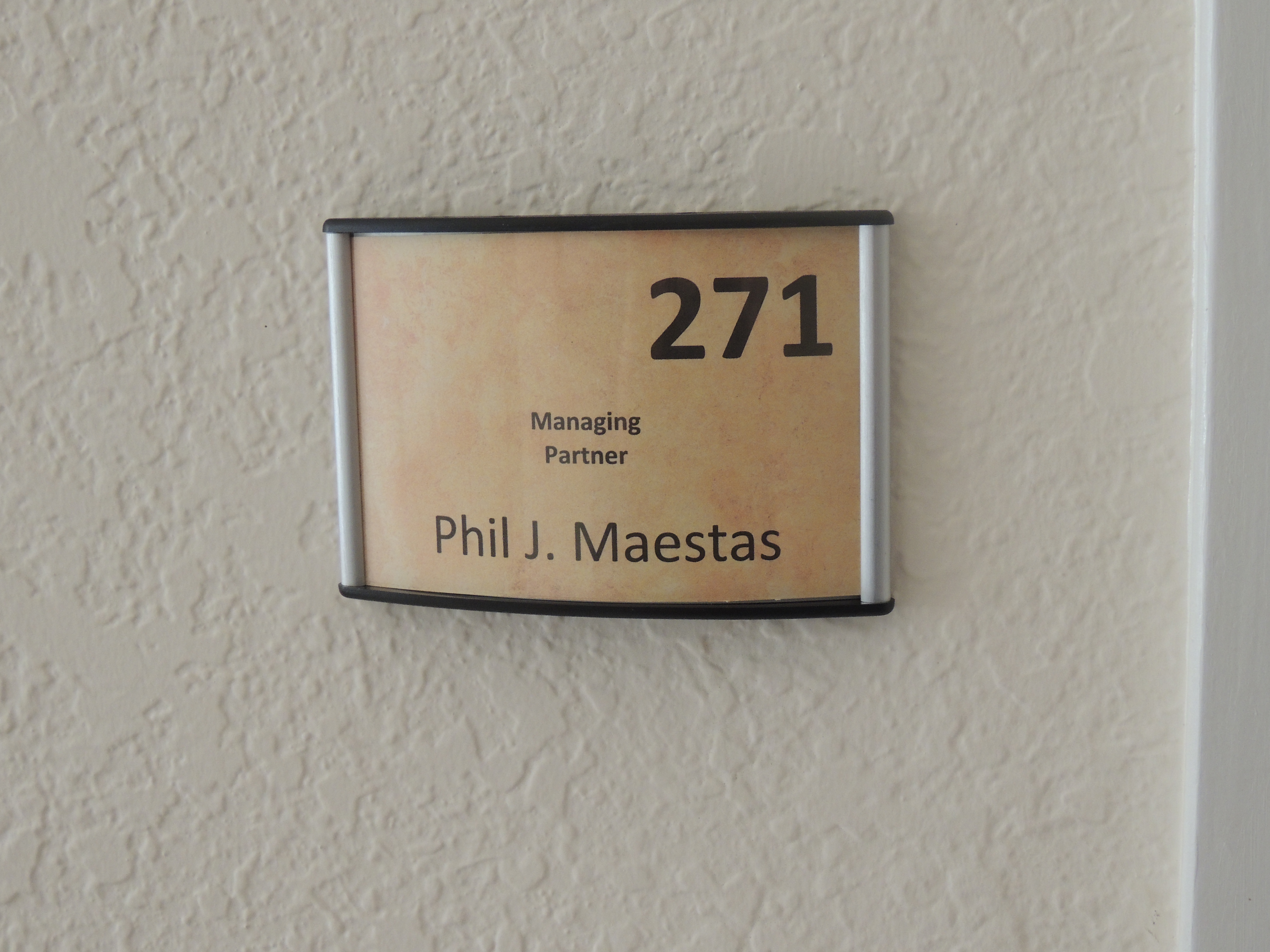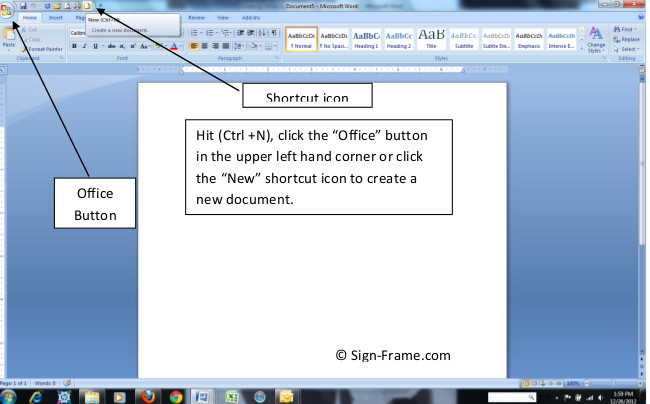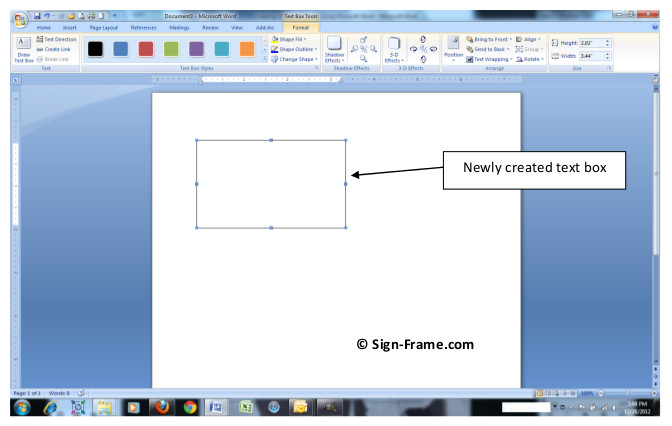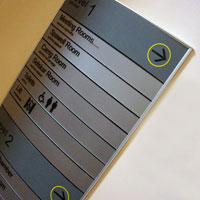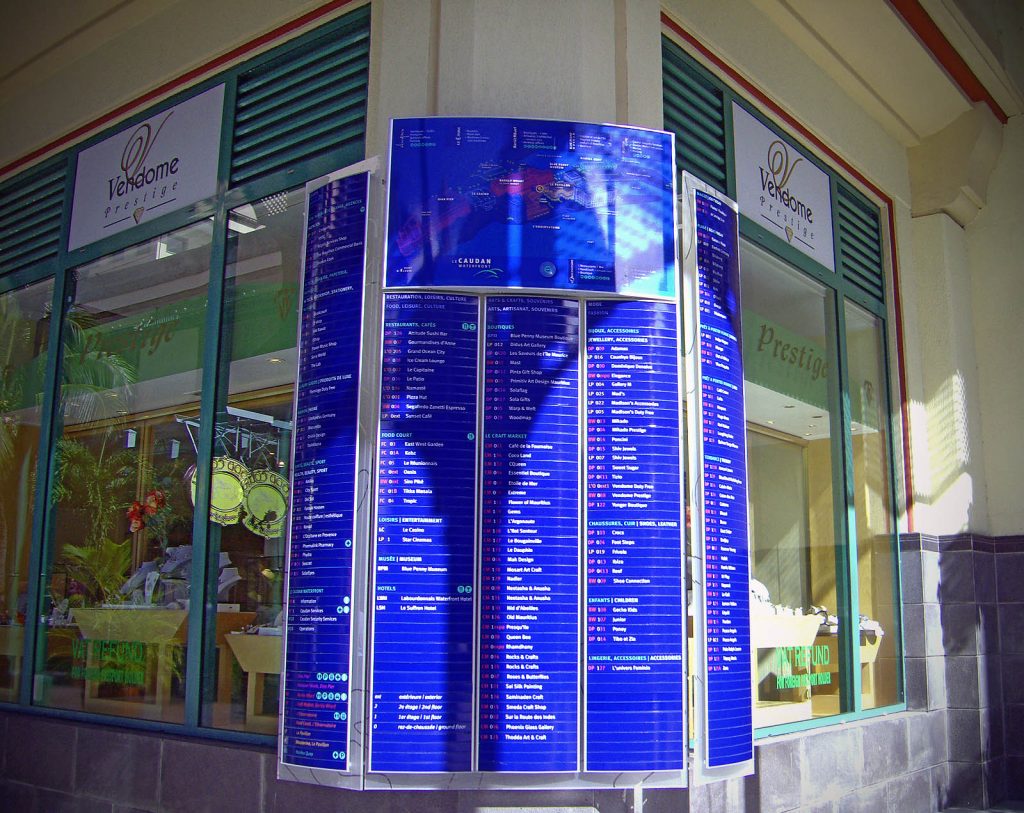Creating professional-looking paper inserts for you office directory sign is quick and easy. Choosing a sign system that allows you to independently create your own paper inserts will also save you time and money. All you need in place to create your office directory sign yourself is an inkjet or laser printer and a word processor such as Microsoft Word.
Maintaining an office directory sign can get expensive and may take weeks to get the frame inserts from your local sign company. Creating frame inserts yourself also ensures signage consistency which may be problematic if either the sign company experiences turnover or cannot find your templates from the previous order.
Since Microsoft Word is common to most businesses we will provide step-by-step instructions, complete with illustrations, as to how you can do paper inserts yourself without leaving the office. There are numerous variations you can use to create your paper inserts but we’ll keep it simple with the instructions set in this article. If you would like to see other variations in design visit our How To section of the site for more information. I’m using a sample sign similar to the DF39U for illustrative purposes, however the process is the same whether designing office signs or office directories. The instructions listed below may vary depending on the version of MS-Word you have installed.
Creating Paper Inserts for an Office Directory Sign using MS-Word
Step 1: Open MS-Word and create a new document by clicking New (Ctrl + N), select the “Office” button in the upper left-hand corner of the screen and click the “New” icon or click the “New” shortcut icon to create a new document. Any of these three options will work.
Step 2: Click the Insert Tab. Then click the Text Box icon in the Toolbar. At the bottom of the window click Draw Text Box.Move your cursor to the document (you will see a “+” sign appear) and drag it diagonally across the drawing surface while holding down the left-click button on the mouse.
Release the left-click button and your text box will appear.
Step 3: To size the text box enter the height and width of the insert you wish to create. Our sample sign happens to have (1) 2” x 5 7/8” header and (5) 1” x 5 7/8” panels. Below is the header.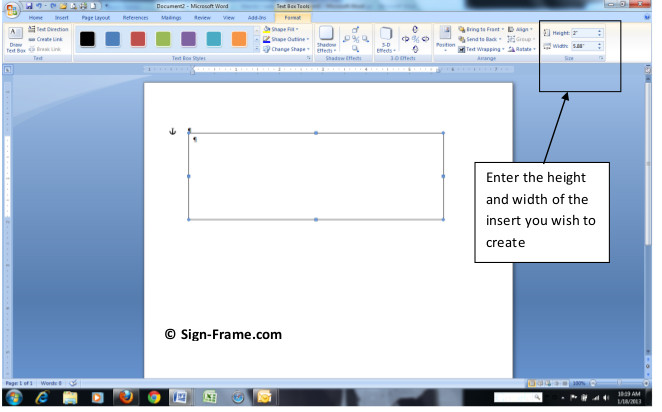
Step 4: Once the size is set you can now choose your background color. Click “Shape Fill” in the toolbar and choose a background color. Rolling your cursor over the color palette will change the color on the background insert until you find the one that best complements your interior design color scheme.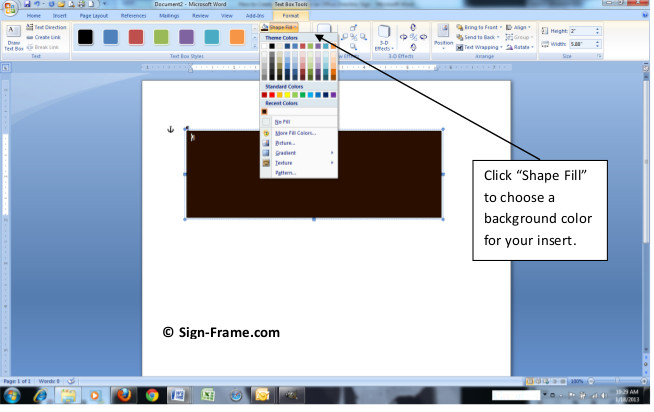
Step 5: Now you can add your text. Add one or more text boxes to your template by clicking the Insert tab and selecting “Draw Text Box” like you did in Step 2. Position the text boxes on the background and choose the font, font color and font size that you desire. In order to eliminate the text box outline click the Format tab -> Shape Outline -> No Outline and now you have just the text. To blend in your text box with the background you’ve chosen, highlight the text box -> right click the text box -> select Format Text Box from the drop down menu -> under Colors and Lines set Transparency to 100%. You can also use the Color dropdown and select the color, texture or pattern to match the background you’ve already selected.Here is the header insert that we’ve created.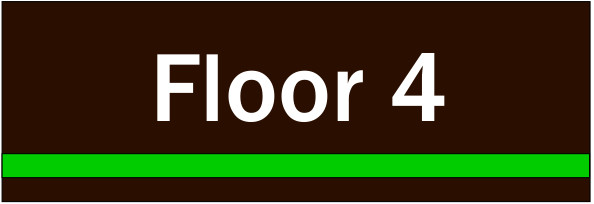
We’re going to repeat the process for each of the (5) individual panels using the process outlined above. Here’s what the layout looks like with the additional frame inserts. Keep them on the same page to save paper during printing.